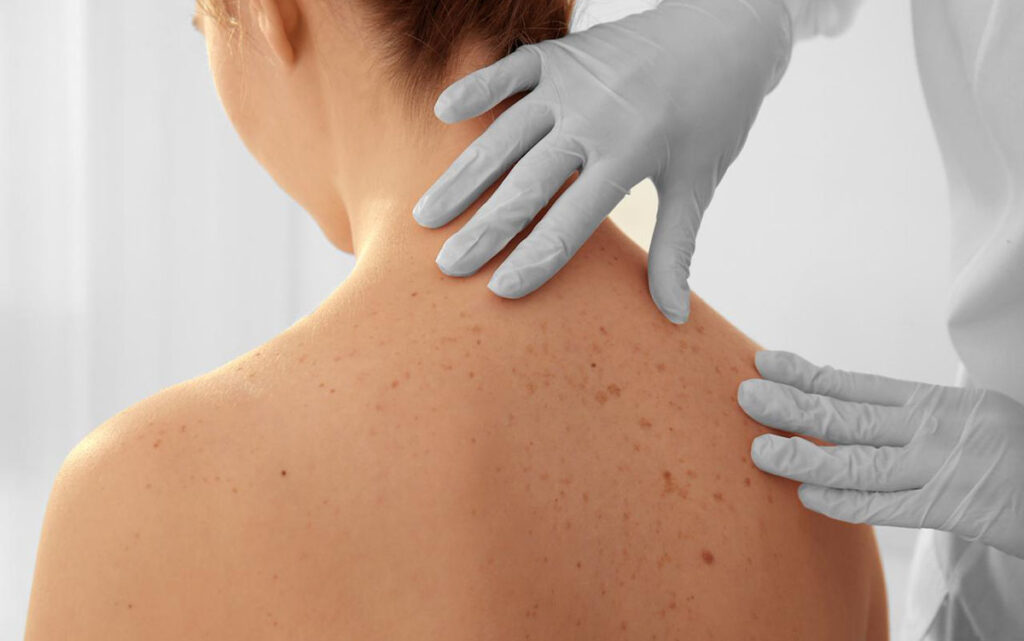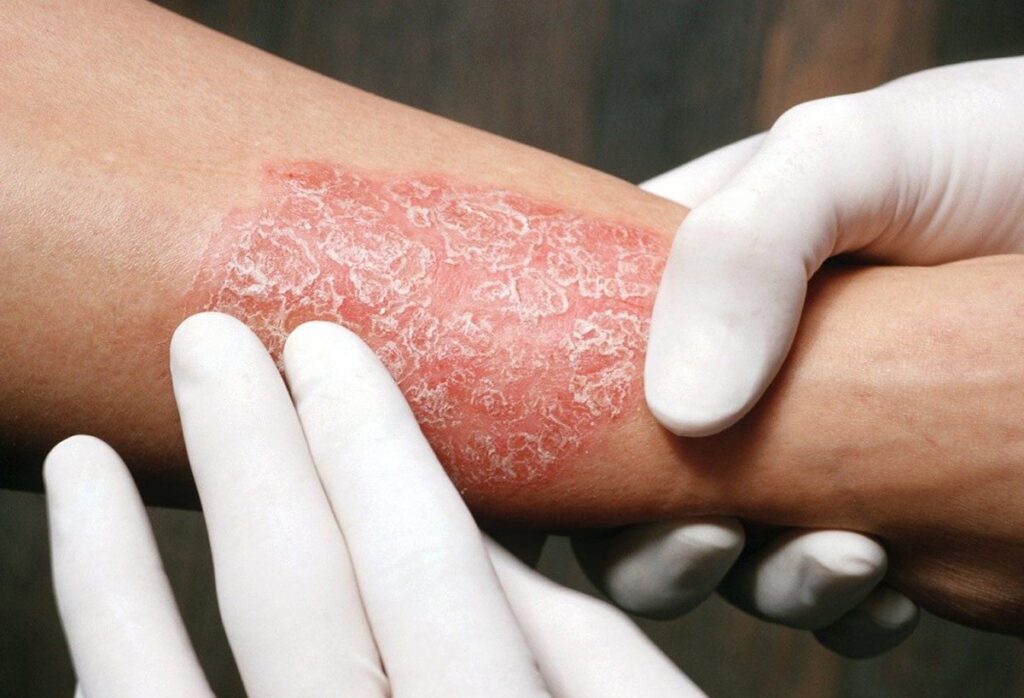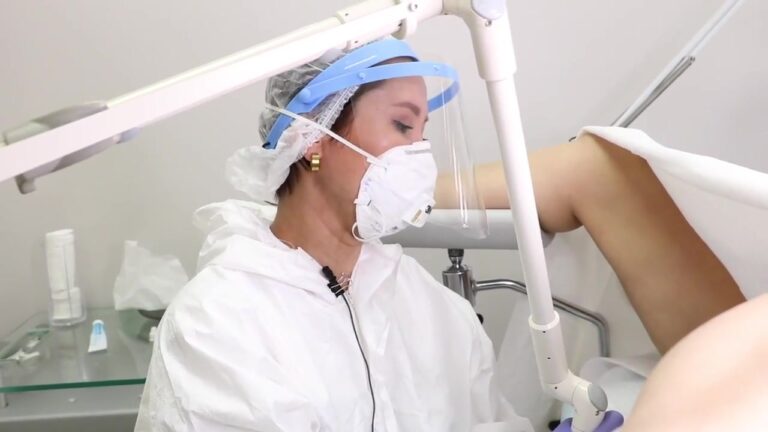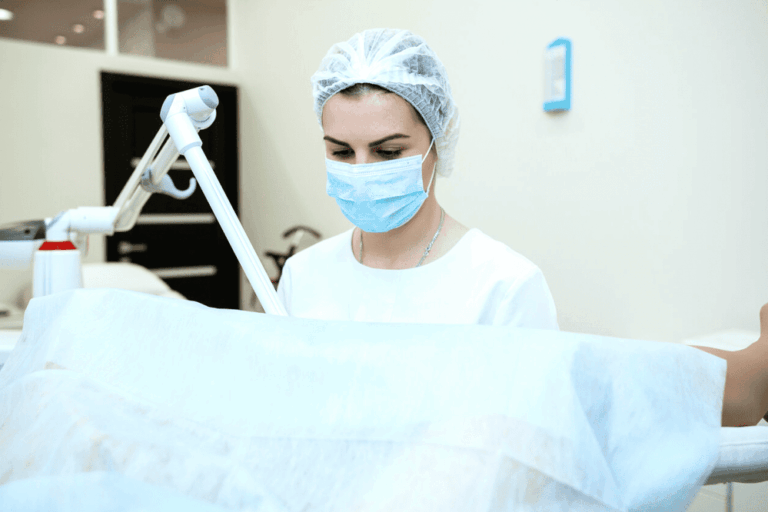
В медицине есть группа дерматологических болезней, которые нельзя полностью вылечить. Можно контролировать их развитие, добиться ремиссии, но с хронической
стадией придется смириться. Псориаз относится к этой группе кожных заболеваний. Хроническое состояние и неинфекционная природа возникновения – основные его характеристики. Псориаз у взрослых и детей проявляется в виде пурпурно-розового цвета с серебристыми чешуйками. Поражает кожу, ногти и суставы. Во всем мире около 4% людей сталкиваются с этим заболеванием. Для него нет возрастного ограничения, но чаще всего встречается в период с 16 до 22 лет и около 60 лет.
Симптомы и признаки псориаза. На разных стадиях псориаз симптомы проявляет с разной интенсивностью. Красные пятна образуются на коже из-за воспалительного процесса и повышенного образования чешуек, которые постоянно отслаиваются. В этих мечтах могут возникать мелкие гнойнички и сыпь. Бляшки располагаются преимущественно на коже волосистой части головы, локтевых и коленных суставах, в нижней части спины, а также в местах кожных складок. В периоды обострения псориаз симптомы проявляет более сильно, привнося психологический и физический дискомфорт. Характерны следующие признаки:

— жжение и сильный зуд;
— чувство стянутости кожи и трещины;
— опухшие и болезненные суставы;
— отслоение и крошение ногтей;
— трещины на кончиках пальцев;
— воспаление десен в ротовой полости.
Лечение. Как вылечить псориаз раз и навсегда – частый вопрос докторам. Можно добиться только ремиссии. Псориаз на лице особенно беспокоит пациентов. Для минимизации его проявлений нужно исключить факторы риска, и соблюдать рекомендации врача. Терапия подбирается строго индивидуально, лекарства периодически меняют. Это необходимо из-за быстрого привыкания к ним и снижения их действия. Псориаз на локтях и других частях тела можно обрабатывать кортикостероидными мазями. Особенно их применяют при острой стадии заболевания, а потом переходят на негормональные препараты для фиксирования состояния ремиссии. «Лечу псориаз самостоятельно» – такой подход при этой болезни не оправдывает себя. Обычно терапия назначается докторами с использованием:
— физиотерапии (облучение ультрафиолетом);
— плазмафереза для вывода токсинов и аутоантител;
— медикаментозной терапии.
Роль питания в лечении. Псориаз на голове, локтях, ногах можно контролировать питанием. Меню больного должно на 70-80% состоять из щелочеобразующих продуктов – фруктов. Яблоки, бананы и дыни рекомендуется кушать отдельно от всего, не сочетая ни с чем. Аналогично обстоит дело и с цитрусовыми. Их нельзя употреблять в комбинации с цельнозерновыми. Кислотообразующие продукты – тоже хорошее лекарство от псориаза. В эту категорию входят: мясо, картофель, бобы, сыр, зерновые, сахар, сливки и др. Как лечить псориаз при подходящем питании – спрогнозировать и спланировать легче. В меню рекомендуется включать брокколи, рыбу, кефир, молоко, отруби, гречку на воде, зеленые овощи, баранину. Диета при псориазе – хорошее усиление терапии.
Помните, ваше здоровье – в ваших руках!



